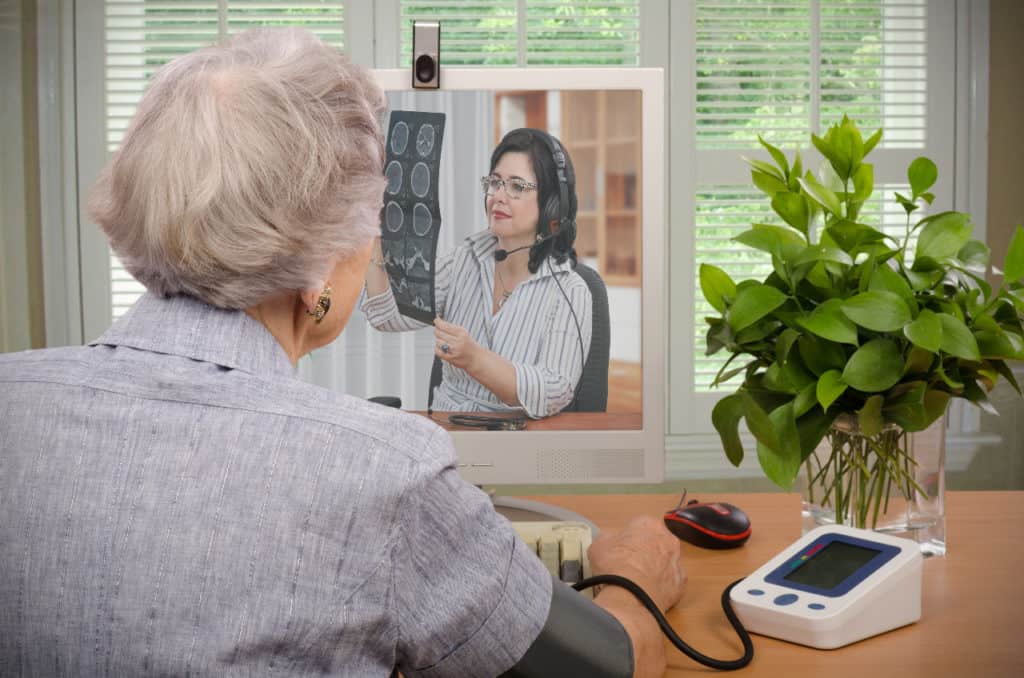At least 50% of states faced a biting shortage of healthcare providers when the COVID-19 pandemic hit.
In 2021, the situation isn’t much better. Add to that the restrictive measures to curb the virus and medical care access can become more complex. In response, health care providers and patients have taken on telehealth visits.
Keep reading for a brief look at telehealth benefits and challenges to leverage this medical care avenue properly.
The Advantages That Make Telehealth Compelling
For many medical professionals and patients, the expansion of telehealth has moved front and center. But what makes this innovative thirst so desirable?
1. More Patients Receive Medical Care
Traditionally, medical care has been a walk-in type of affair. However, the COVID-19 pandemic significantly upended things. As the crisis deepened, more hospitals and health care providers struggled to find adequate staff to handle in person visits.
All of a sudden, remote healthcare became a near-default option for all people to get access to healthcare. The reach this kind of innovation offers has enabled healthcare workers to save lives and continue offering critical and quality care.
For example, people looking for psychology services have exceptionally had a rough time during this crisis. While some people would wonder whether telepsychology works before the pandemic, that’s not the case.
Telepsychology has proven its salient benefits as a telehealth platform, such as eliminating traffic hassles to get to the doctor’s office and the convenience of therapy sessions from home.
Once the pandemic is principally dealt with and people can go back to their typical routines, it’s not difficult to see why more people will still lean into their adoption of telehealth with healthcare professionals.
2. Affordable Healthcare
Another perk with the expansion of telehealth is the positive impact it has on the cost base. With the cost to access medical care lower, patients can receive medical attention at a more affordable price while still keeping the quality of care they need.
For example, as part of the benefits of telehealth, you don’t need to drive to the doctor’s office. For people in rural areas who can at times have to travel overnight to see a medical professional, that’s a considerable cut in costs increasing patient satisfaction.
If you add up such cost savings over a year, you can see how medicare becomes more affordable with telehealth.
3. Better Healthcare Quality
Telehealth has the unique capacity to lift the quality of medical care on offer. That’s a valuable feature within telehealth capabilities.
Let’s say you need to access specialized medical attention that’s not in your locality. A telehealth encounter can help you tap into specialized medical attention continents away, without waiting for all the logistics to fall in place before you can travel.
For patients in rural areas, this can be a life-or-death issue.
4. Lower Patient No-Shows
It’s not uncommon for patients to not show up for an appointment. For the medical professional, this trend can quickly become a rising cost center. For the patient, not showing up hinders receiving much-needed medical attention.
Telehealth helps patients overcome barriers that keep them away from the hospital, which is especially critical for rural populations. Additionally, leveraging telehealth allows hospitals to plug a cost center that can drag the bottom line down while giving a standard of care with treatment plans.

5. Allows for More Efficient Operations
A less touted but still critical advantage of adopting virtual visits is the efficiency it brings to the table. When health care services and the primary care provider rely on virtual health services, they can better deliver a continuity of care.
For instance, triaging becomes more effective, which has a knock-on effect on faster care delivery. On top of that, telehealth gives medical professionals the capacity to incorporate data. That leads to valuable insights to help make better medical decisions bettering patient care.
All these performance improvements, taken as a whole, can turn around a practitioner’s processes for a win-win operation.
Challenges Telehealth Needs to Resolve
Every gold bar has some dross. Similarly, telehealth still has drawbacks that pull down its ability to deliver. Some of these challenges of telehealth include:
1. A Lack of Connection
Medical care is a rather personal service. As such, many professionals and patients consider the in-person connection critical to individual person care. Without this personal touch, it may be impossible to offer medical services effectively, especially in the case of chronic conditions.
Regardless of the debate around this point, some patients still prefer seeing a medical practitioner in person as they want the patient-provider relationship. That’s a hurdle that will have to be addressed with the increase in telehealth may not bridge, despite the leaps technology makes.
2. Technology-Related Challenges
Technology is continually evolving, and outside of those working in the tech bubble, that’s a disadvantage. Why? With every leap forward comes the need to re-skill for both patients and practitioners.
For patients, barriers to telehealth can mean learning the ropes to use an innovation. For medical practitioners, that means both the skill and infrastructure requirements. A practitioner will have to pick up skills associated with adopting new yet necessary technology and invest in the needed tools for it.
That might mean buying new equipment, expanding the existing infrastructure, or even hiring technology workers. The practitioner will also need to continually train these workers so they can deliver relevant telehealth services.
Unless a practitioner’s bottom line grows in tandem with technology, it may not be easy to keep delivering effective telehealth services.
3. Privacy Concerns
Data is the new oil, and that’s led to an increase in cybersecurity threats. Medical data, in particular, is precious on the back market. Without robust security, telehealth can be a weak link within healthcare services.
The issue only becomes more complex when you factor in patients who don’t take the necessary precautions. For example, a patient in a rural location may have to use public internet services to access virtual medical attention and be a telehealth patient.
In such a situation, a malicious actor faces fewer obstacles in gaining unauthorized access to medical data. Thus, the practitioner has to take extra care in protecting the patient’s privacy.
With every new type of medical cybersecurity breach, practitioners and patients will have to learn new protocols to counter these malicious actors.
Understanding Telehealth Benefits and Challenges
The pandemic has brought to the fore the need for virtual medical care. With this wave comes a concerted look at telehealth benefits and challenges to better grasp how to use this tool for the greater good.
It’s vital to make an effort and understand the pros and cons of virtual medical care so you can use telehealth safely and effectively. Healthcare is critical, and no era in recent memory brings this fact home at a global level than during the COVID-19 pandemic. Book your appointment today to receive quality telehealth psychology services safely and conveniently.


